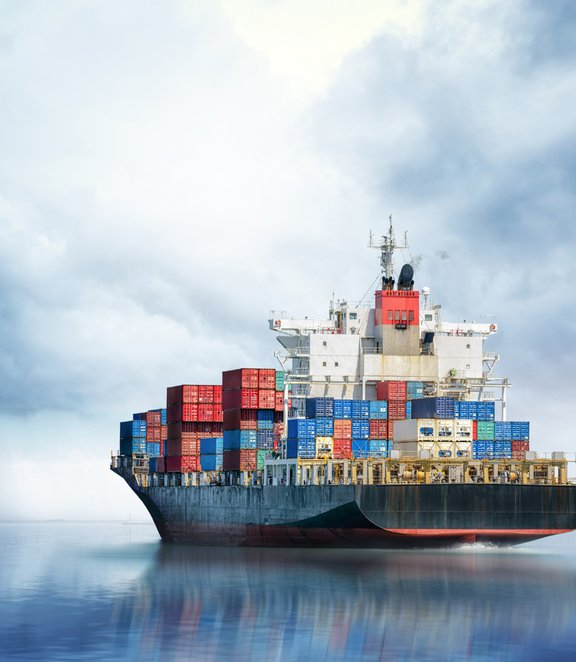Maritime transport: a major player in the globalisation of the economy - pt.1

In an increasingly interconnected world, maritime transport emerges as the essential pillar of global trade and the backbone of the world economy. From ancient times to the present day, the oceans have witnessed the constant evolution of maritime transport, which plays a crucial role in the exchange of goods and economic development.
According to the IMO International Maritime Organisation, most world trade (around 90%) is conducted through maritime transport. With shipping, goods could be imported and exported on the scale needed to sustain today's world.
It is estimated that more than 50,000 merchant ships are engaged in international trade, carrying all types of cargo. The current world fleet is registered in more than 150 nations and employs over one million seafarers of almost every nationality.
Brief history of maritime transport
The history of shipping is as old as human civilisation itself. From the earliest attempts to navigate bodies of water to modern cargo and cruise ships, its evolution has been critical to developing societies and global trade.
The first vessels were simple rafts and canoes made of logs or animal skins, whose use was limited to fishing and local transport on rivers and lakes.
As ancient civilisations expanded, more advanced ships emerged for coastal navigation in the Mediterranean, the Red Sea and the Aegean Sea. The Phoenicians (1500-330 BC), skilled navigators, played a crucial role in expanding maritime trade in antiquity.
Sailing and exploration
The invention of the sail enabled navigation on the high seas, facilitating travel over longer distances. This was when the first merchant ships arrived, the cogs, used for this purpose in medieval times. Not only that, but these first ships also played a leading role during the Crusades (between 1085 and 1291).
But man wanted to go further. During the 15th and 16th centuries, global maritime exploration for better routes to India changed the shipping history forever. European navigators, such as Christopher Columbus, Vasco da Gama, and Ferdinand Magellan, undertook voyages that expanded known horizons and established global sea routes still in use today.
Privatisation of maritime exploration
The successful campaigns of Columbus, Vasco de Gama, or Magellan, always backed by a state, were the object of desire in private hands. The 17th century marked the expansion of maritime trade in the Indian and Pacific Oceans. European trading companies, such as the East India Company, established trade routes connecting Europe, Africa, Asia, and the Americas.
The Industrial Revolution occurred at this time, and steamships were introduced in the early 19th century. These steam-powered ships gradually replaced sailing ships, improving the efficiency and speed of maritime transport.
The opening of the Suez Canal in 1869 and the Panama Canal in 1914 facilitated transit between the Atlantic and Pacific oceans, significantly reducing travel times and improving global connectivity.
We are now entering the 20th century. World wars drove technological development in shipping. World War II saw the introduction of specialised cargo and container ships, laying the foundations for modern shipping.
The widespread introduction of containers in the mid-20th century revolutionised shipping—this efficient approach allowed for easier cargo handling and intermodal transport, connecting ports with railways and roads.
Globalisation has led to an exponential increase in the volume of maritime trade in recent decades. Modern shipping incorporates advanced technologies, such as global positioning systems (GPS) and satellite communications.
Today, shipping remains essential to global trade, connecting economies and facilitating the exchange of goods on an unprecedented scale. Its history reflects humanity's ability to overcome challenges, using the oceans as a vital means to progress and prosperity.
To be continued...
